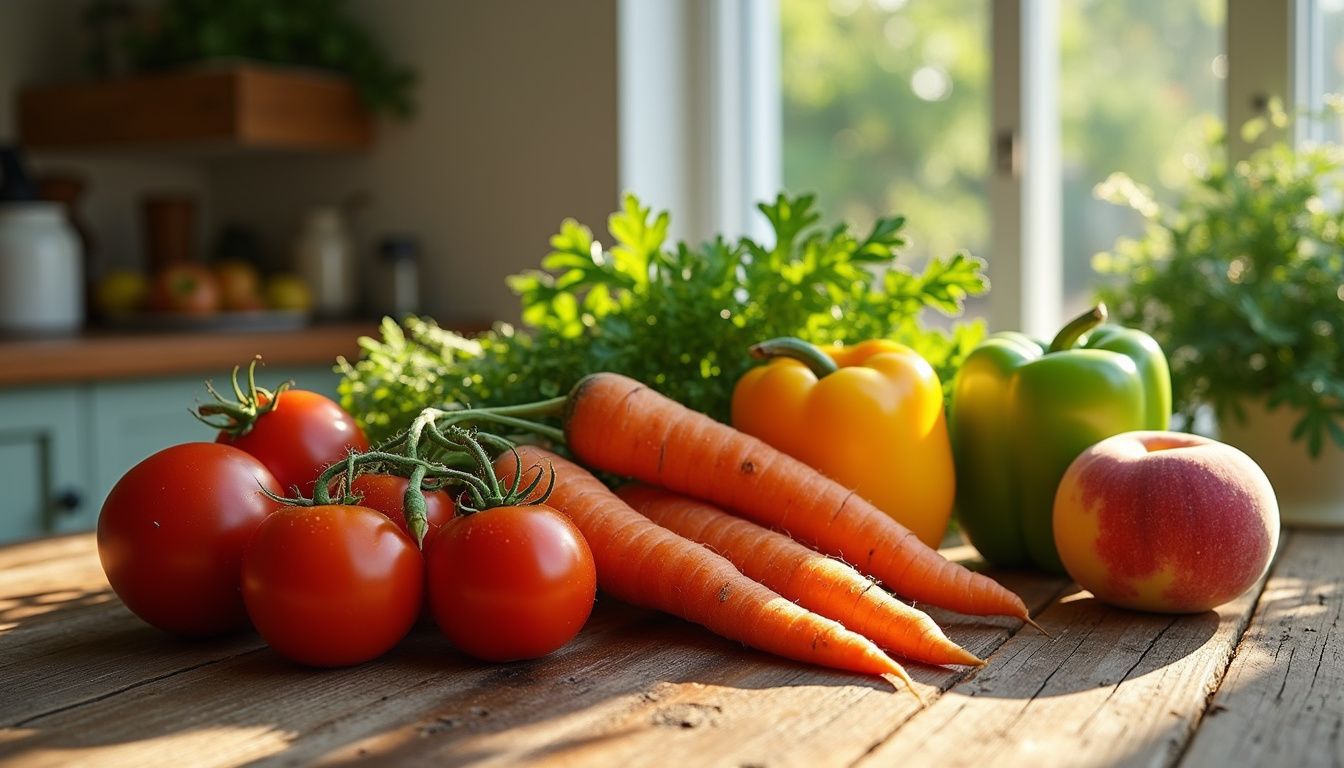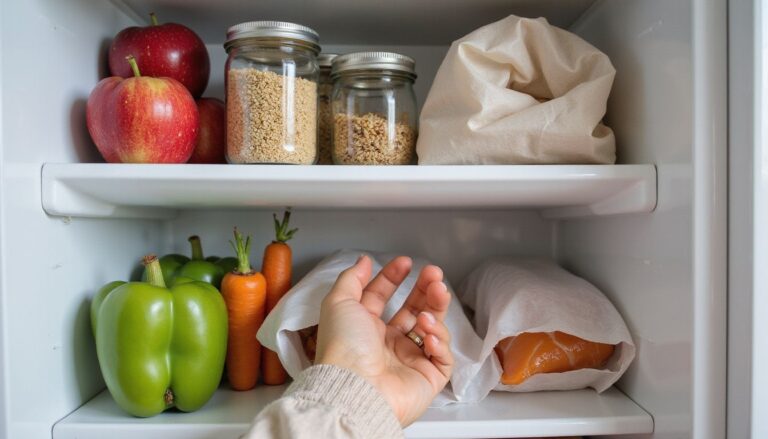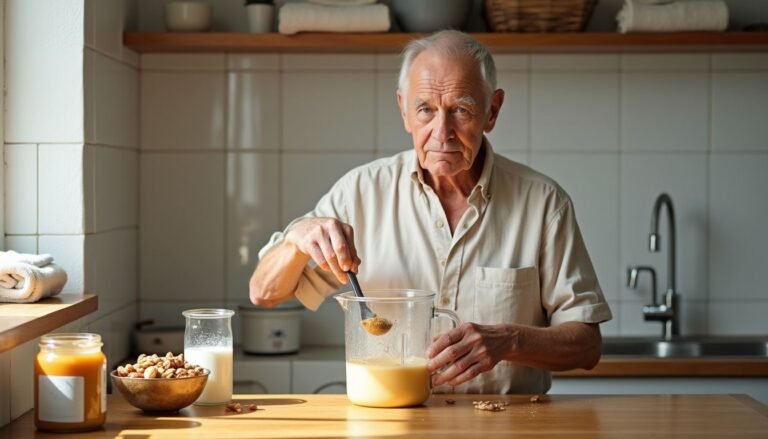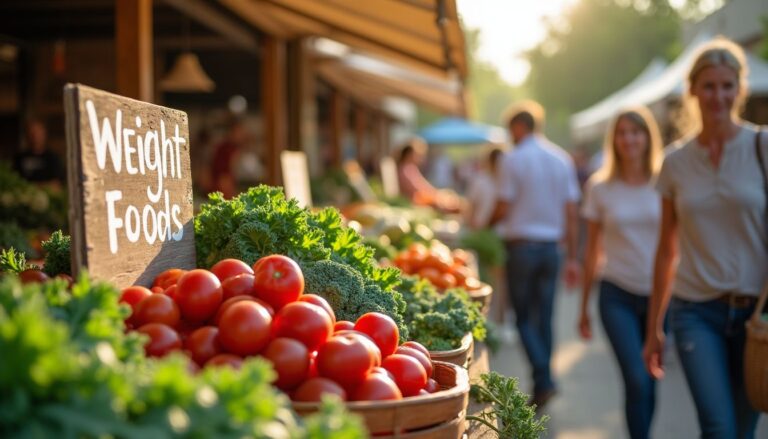100 Fat Burning Foods: Top Picks For Burn Fat Fast
Our Nutrition Assistant AI Suite will transform your body. You will lose fat, get toned, and build muscle. Gain confidence and optimal health.
Struggling to lose weight can feel frustrating. You are not alone. Choosing the right fat-burning foods helps you burn more calories and stay full longer. For example, Greek yogurt packs almost twice the protein of regular yogurt, which helps curb hunger for hours.
This guide highlights 100 fat burning foods that support weight management. These choices can nudge your metabolism, control appetite, and make fat loss more sustainable. Use them to build simple meals that help you burn fat and reach your goals.
Keep reading and find easy foods you will want to eat every day.
Key Takeaways
- Protein and fiber increase fullness and raise calorie burn during digestion. Greek yogurt, beans, and oats are standouts.
- Green tea may raise daily calorie burn by about 70 to 100 calories, thanks to catechins, a type of antioxidant.
- Whole grains such as oats, quinoa, and brown rice provide steady energy and are linked with less belly fat.
- Healthy fats from avocados, nuts, olive oil, flaxseed, and MCT oil support satiety and nutrient absorption.
- Metabolism-boosting drinks like green tea, coffee in moderation, and oolong tea can slightly increase energy expenditure.

What Are Fat-Burning Foods?
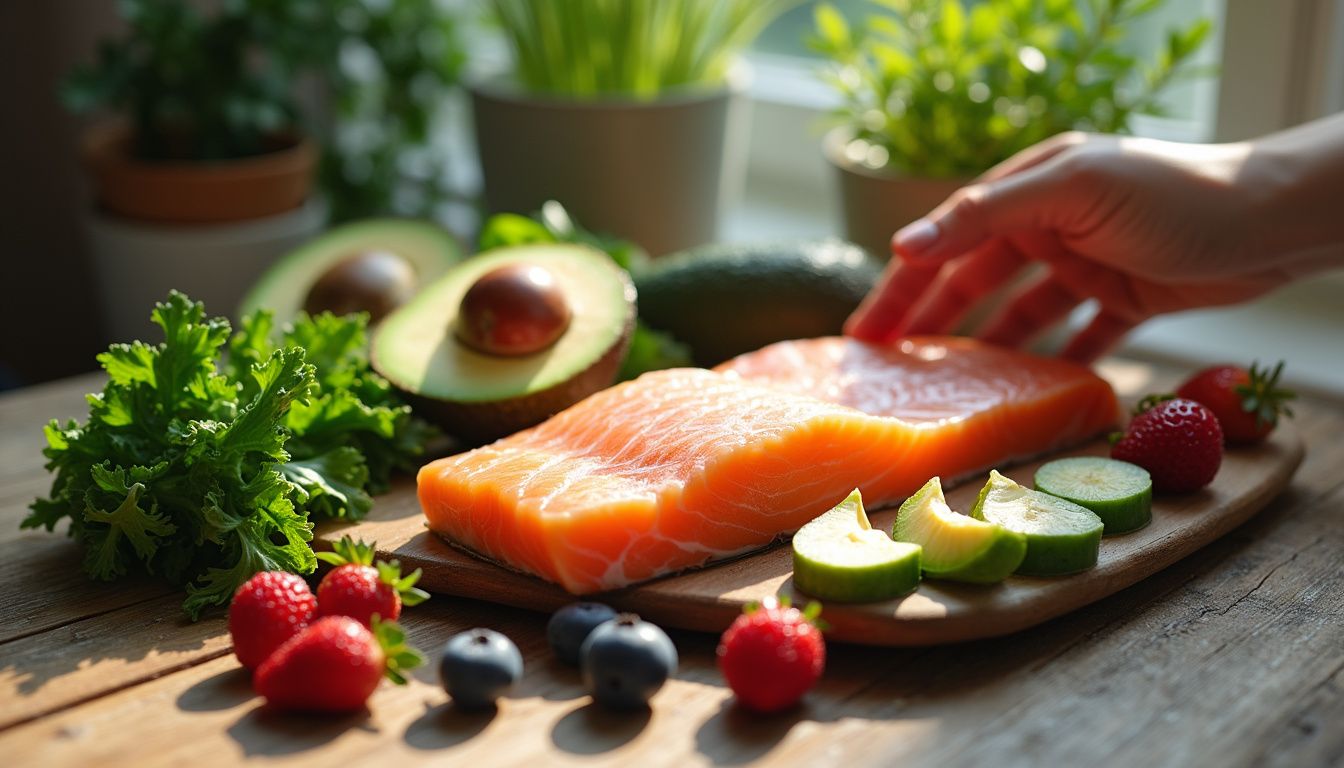
Fat-burning foods work in three simple ways. They can slightly increase your metabolism, help you store less fat, or make you feel full with fewer calories. Metabolism is the process your body uses to convert food into energy.
Top picks include foods high in protein, healthy fats, and dietary fiber. Think salmon and sardines, Greek yogurt, beans and lentils, avocados, almonds and walnuts, olive oil, flaxseed, and MCT oil. These choices support fullness and better energy control.
Leafy greens like spinach and kale, berries, apples, pears, citrus fruit rich in vitamin C, and spicy chili peppers can also support fat loss. They offer volume, fiber, and nutrients for very few calories.
Whole grains such as oats, quinoa, brown rice, and buckwheat deliver steady energy. You tend to eat fewer calories over the day when your energy stays level. Drinks like coffee and green tea may also help due to caffeine and antioxidants.
Water matters too. On days I focused on lean protein, vegetables, and plenty of water and green tea, I felt less hungry and lost belly fat over time.
“Certain foods can increase energy expenditure and promote healthy weight loss.”
No single perfect list of 100 best fat-burning foods exists, yet these groups show the strongest evidence for safe, steady weight loss.
How Do Fat-Burning Foods Benefit Your Health?
Fat-burning foods make weight loss more manageable. They help control hunger, support a healthy metabolism, and keep your meals balanced without excess calories.
How do fat-burning foods boost metabolism?
Some foods and drinks help your body use more calories for energy. Green tea contains catechins, plant antioxidants that support fat oxidation, which means using fat for fuel.
Research suggests drinking green tea daily may raise calorie burn by roughly 70 to 100 calories. Coffee also raises metabolic rate a little because caffeine stimulates the nervous system.
Chili peppers provide capsaicin, a compound that can raise body temperature briefly and increase calorie burn for a short time. Oats digest slowly due to fiber, which slightly increases the energy your body uses during digestion.
Cinnamon may help steady blood sugar, which supports metabolic health. Switching from sugary snacks to Greek yogurt with cinnamon or berries helped me feel more energetic and less hungry through the day.
How do fat-burning foods promote satiety?
Greek yogurt keeps you full longer because it digests slowly and contains almost twice the protein of regular yogurt. Quinoa offers both fiber and protein, which also improves fullness.
Apples and pears, eaten with the peel, deliver fiber and water. Whole fruit fills you up better than juice because the fiber remains. Air-popped popcorn offers big volume for few calories.
Broth-based soups and salads before a meal add water and fiber. This simple step often reduces how many calories you eat afterward.
“Choosing high-fiber, protein-rich foods helped me stay full between meals and avoid snacking.”
How do fat-burning foods support sustainable weight loss?
Long-term weight loss requires a calorie deficit, which means burning more calories than you eat. Protein and fiber help you get there by reducing hunger and snacking.
One cup of garbanzo beans has about 12.5 grams of fiber and 15 grams of protein. That mix curbs appetite and supports steady energy. Leafy greens, skim milk, and whole-grain crispbreads are low in calories but rich in nutrients.
Studies have shown that replacing refined grains with whole grains improves weight management and cholesterol levels. Choosing these best fat burning foods helps you lose weight safely and keep it off.
How do fat-burning foods improve energy levels?
Complex carbs, such as sweet potatoes and brown rice, release energy slowly. This helps you avoid the highs and lows that lead to cravings. Sweet potatoes provide potassium, vitamin C, and fiber, which support steady energy.
Salmon and sardines supply protein and omega-3 fatty acids. These support heart health and help you feel alert. Oatmeal, rich in fiber and water, keeps mornings stable.
Kefir, a fermented milk drink, contains vitamins that support energy production. I notice more stamina on days I include whole grains and fatty fish at breakfast.
Lean Proteins That Help Burn Fat
Lean protein helps you feel full, maintain muscle, and burn more calories during digestion. Adding these foods and drinks to your meals can enhance fat loss.
Which fatty fish burn fat?
Fatty fish aid weight loss because they are rich in protein and omega-3s. They support satiety and overall heart health.
- Salmon offers healthy fats, vitamin D, and protein. A 3 to 4 ounce serving supports fullness and helps preserve muscle during weight loss.
- Sardines provide calcium, omega-3s, and vitamin D. They are filling and convenient, especially canned in water or olive oil.
- Herring supplies protein and omega-3s. It satisfies hunger and works well in salads or simple lunches.
- Mackerel delivers abundant omega-3s that support fat metabolism. Some research links omega-3 intake with less abdominal obesity.
- Tuna is high in protein with little saturated fat. It supports muscle growth and easy meal prep.
- Trout provides protein and omega-3s and digests at a moderate pace, which helps control hunger.
- Shrimp is a carb-free protein source that fits low-calorie meals and snacks.
Including these fish a few times each week can help your body burn fat while protecting your heart.
What poultry options aid fat loss?
Poultry is a lean, versatile protein that supports fat loss and muscle maintenance.
- Skinless chicken breast delivers about 31 grams of protein and roughly 3.6 grams of fat per 100 grams.
- Turkey breast offers around 29 grams of protein with about 1 gram of fat per 100 grams.
- Both options are low in saturated fat, which supports heart health and may reduce abdominal fat.
- Stick to 3 to 4 ounces cooked per meal to manage calories.
- Pair poultry with raw vegetables or whole grains to extend fullness.
- Lean poultry helps preserve muscle during calorie restriction or lower-carb plans.
- Chicken and turkey appear on many lists of fat-fighting foods for good reason.
Are eggs effective for fat burning?
Eggs are compact, nutrient-rich, and support fat loss. One large egg has about 75 calories and 7 grams of protein. Protein increases the calories you burn while digesting it, a process called the thermic effect of food.
Egg whites are high in protein with very little fat or carbs. Current guidance focuses more on limiting saturated fat than avoiding dietary cholesterol from eggs. A simple egg breakfast can reduce morning snacking. When I swapped toast for eggs, I stayed full until lunch.
How does Greek yogurt support fat loss?
Greek yogurt contains almost double the protein of regular yogurt. Higher protein means a stronger thermic effect and better satiety after meals. That can lead to fewer cravings and less snacking.
Low-fat or nonfat varieties cut calories and sugar. Calcium may assist the breakdown of fat stored in adipose tissue, which is your body’s fat tissue. Probiotics in Greek yogurt may also support gut health, which is linked with weight control in some studies.
Use it as a base for snacks and smoothies to raise protein intake without a lot of calories.
Can whey protein help burn fat?
Whey protein supports fullness and helps you hit daily protein goals. It also raises calorie burn during digestion compared with carbs or fat.
Many people take whey after exercise to aid muscle recovery and protect lean mass while dieting. Add it to smoothies or oatmeal for a quick boost. Research shows whey can help preserve muscle during weight loss, which makes maintenance easier.
Healthy Fats That Promote Fat Loss
Healthy fats do more than add flavor. The right fats support fullness, nutrient absorption, and a steady metabolism.
Why are avocados good for fat burning?
Avocados provide monounsaturated fats that support heart health and help control hunger. Feeling satisfied makes it easier to keep a calorie deficit.
They also increase absorption of fat-soluble vitamins A, D, E, and K. Add avocado to salads or use it as a spread for nutrient-dense meals that stabilize appetite. Many dietitians include avocados in plans that promote weight loss and metabolic health.
Which nuts help burn fat?
Nuts offer a smart mix of protein, fiber, and healthy fats. A small handful can keep you full and support better blood lipids.
- Almonds supply magnesium, protein, and healthy fats that boost satiety and may modestly raise metabolism.
- Pecans contain mostly unsaturated fats that support cholesterol control. Moderate intake fits heart-healthy eating.
- Walnuts deliver omega-3s, protein, and fiber. They help regulate hunger signals.
- Pine nuts contain manganese and magnesium. These minerals support energy production and appetite control.
- Peanuts provide plant protein, fiber, and phytochemicals. They suit many eating styles, including vegetarian diets.
- Chia seeds bring omega-3s and protein. They thicken yogurt or oatmeal and improve fullness.
- Flaxseeds add fiber and healthy fats. They aid digestion and help you feel satisfied.
Use nuts in small portions. They are calorie-dense, yet very filling and nutrient-rich.
How does olive oil aid fat loss?
Olive oil contains monounsaturated fat that helps stabilize blood sugar and tame hunger. Replacing creamy dressings with olive oil vinaigrettes often lowers calories and cuts additives.
One tablespoon has about 120 calories, yet a little goes a long way. Olive oil enhances absorption of fat-soluble nutrients from vegetables, supports heart health, and fits a Mediterranean-style plan that promotes weight management.
What benefits does flaxseed offer for fat burning?
Flaxseed provides omega-3 and omega-6 fats plus fiber and protein. This trio supports satiety and keeps blood sugar steadier after meals.
Stir ground flax into smoothies, oatmeal, or Greek yogurt. Many athletes use flaxseed for its nutrient density and gentle digestive support while cutting calories.
How does MCT oil support fat burning?
MCT oil contains medium-chain triglycerides, a type of fat your body digests quickly. This can provide fast energy with a lower chance of being stored as fat compared with some longer-chain fats.
Adding MCT oil to coffee or smoothies may increase fullness. Some studies in the American Journal of Clinical Nutrition report that MCTs can raise daily energy expenditure by up to about 5 percent. People on keto or low-carb plans often use MCT oil for appetite control and steady energy.
Fiber-Rich Vegetables and Fruits for Fat Burning
Fiber adds volume to meals while keeping calories low. That is why fiber-rich produce is your daily advantage in a fat-loss plan.
How do leafy greens like spinach and kale help burn fat?
- Spinach and kale are high in fiber and water, which helps you feel full sooner with fewer calories.
- They supply vitamins A, C, and K and minerals like iron and magnesium for strong nutrition without calorie overload.
- Fiber supports digestion and gut health, both important for weight control.
- These greens fit salads, smoothies, egg dishes, and sides. They add volume for very few calories.
- Eating a small salad before your main course can lower how many calories you eat at that meal.
- Their low energy density makes them ideal for weight loss.
- Many people notice fewer evening cravings when they start dinner with greens.
- Mix different lettuces to keep flavors fresh and interesting.
- Greens pair well with nuts and seeds for better texture and satisfaction.
- Regular intake of leafy greens is linked with higher success in long-term weight management.
Are sweet potatoes good for fat loss?
Yes. Sweet potatoes are low in fat and high in fiber, which supports fullness. They are rich in potassium, beta-carotene, copper, vitamin C, and other nutrients that support metabolism.
They provide complex carbs for steady energy. Bake wedges as a side, or add diced sweet potato to whole-grain salads. This supports digestion and makes meals satisfying without heavy toppings.
Which berries support fat burning?
Berries are flavorful, low in calories, and gentle on blood sugar. They make a great topper for yogurt, oats, or salads.
- Blueberries are rich in antioxidants and fiber, which support fullness and reduce inflammation.
- Strawberries offer vitamin C and water, which help with hydration and satiety.
- Raspberries deliver about 8 grams of fiber per cup to keep you full longer.
- Blackberries provide antioxidants and fiber and work well in snack mixes.
- Cranberries, especially unsweetened, support metabolic health with unique plant compounds.
- Acai berries contain anthocyanins, pigments that may reduce oxidative stress.
- Gooseberries are low calorie and rich in vitamin C and polyphenols that support fat oxidation.
Adding a daily serving of berries made my snacks more satisfying and reduced my cravings for sweets.
Can grapefruit aid in burning fat?
Grapefruit is low in calories and high in water and vitamin C. Eating half a grapefruit before meals can help you feel full, so you eat fewer total calories.
Its soluble fiber supports digestion and steady appetite. Add slices to salads or enjoy it as a simple snack.
How do apples and pears contribute to fat loss?
Apples and pears are portable, low-calorie snacks with plenty of fiber and water. They fit into busy days without effort.
- A medium apple offers about 4 grams of fiber, especially with the peel.
- Water content fills your stomach and tames hunger.
- Whole fruit beats juice for fullness because the fiber remains intact.
- They are easy swaps for high-calorie snacks like cookies or pastries.
- These fruits support digestion and more stable blood sugar.
- Their natural sweetness can replace dessert for fewer calories.
- Both appear in many research-backed lists of fat-fighting foods.
Whole Grains That Support Fat Loss
Whole grains provide fiber, micronutrients, and slow-digesting carbs. They keep you fuller for longer and help control blood sugar swings.
How do oats help with burning fat?
Oats are fiber-rich and filling. They digest slowly, which helps you feel satisfied and reduces snacking.
Choose plain oats and add cinnamon, berries, or nuts. This keeps sugar low while boosting flavor and antioxidants. Many athletes favor oatmeal for long-lasting energy and heart health.
Is quinoa effective for fat burning?
Yes. One cooked cup of quinoa has about 8 grams of protein and 5 grams of fiber. This slows digestion, improves fullness, and reduces overeating.
Quinoa is a complete protein, which means it contains all nine essential amino acids. More lean muscle raises your resting calorie burn. Quinoa also supplies iron, zinc, selenium, and vitamin E.
Cook it like rice or toss it into salads with vegetables and chicken or fish. I also use quinoa flour in baking for more nutrition than standard wheat flour.
What role does brown rice play in fat loss?
Brown rice offers slow-digesting carbohydrates and some plant protein. Whole grains like brown rice are linked to less belly fat and better digestion due to higher fiber.
It has a lower glycemic index than white rice, which means fewer blood sugar spikes and fewer cravings. Pair brown rice with lean proteins and vegetables for balanced, filling meals.
How does buckwheat support fat burning?
Buckwheat helps keep blood sugar steady because it is low on the glycemic index. Each cooked cup has about 5 grams of fiber and 6 grams of protein for stronger fullness.
It is naturally gluten-free. Use it in pancakes, porridge, or salads for more variety while supporting weight loss.
Metabolism-Boosting Beverages to Drink
Smart drinks can offer a small but helpful bump to your daily calorie burn. Think of them as gentle helpers, not magic bullets.
How does green tea boost metabolism?
Green tea contains catechins that support fat oxidation and a small metabolic lift. Several cups per day before meals may produce the most benefit in some studies.
It is a low-calorie swap for sugary drinks. Switching from soda to green tea helped me feel fuller and steadier through the afternoon.
Can coffee help burn fat?
Caffeine can raise calorie burn by roughly 3 to 11 percent for a short period. Black coffee is very low in calories and fits most plans.
Have it before workouts for a mild energy boost. Keep add-ins light, since cream and sugar add up fast. Too much caffeine can disrupt sleep, which can slow progress.
What does oolong tea do for fat loss?
Oolong tea may increase energy expenditure for a few hours. Antioxidants in oolong support fat oxidation and metabolic health.
Enjoy it hot or iced. I swapped my afternoon coffee for oolong and noticed fewer cravings and steadier energy.
Which herbal teas support fat burning?
Several herbal teas support hydration, digestion, and appetite control. They are naturally low in calories.
- Peppermint tea can ease bloating and supports hydration.
- Hibiscus tea is rich in antioxidants and tastes tart without added sugar.
- Dandelion root tea acts as a gentle diuretic and supports digestion.
- Rooibos tea is caffeine-free and may help with appetite control.
- Fennel tea supports digestion and may reduce hunger.
- Ginger tea warms the body and may slightly raise calorie burn.
- Chamomile tea supports relaxation and better sleep, which helps regulate hunger hormones.
Why is water important for metabolism?
Your body needs water for every metabolic process, including turning food into energy. Drinking water before meals often leads to fewer calories eaten at that meal.
High-water foods like watermelon also help with fullness. Good hydration improves exercise performance and calorie burn during activity. Starting meals with soup or salad boosts water intake and helps portion control.
Spices and Condiments That Enhance Fat Burning
Spices add flavor with very few calories. Some also support steadier blood sugar and a slightly higher calorie burn.
How does cinnamon aid fat loss?
Cinnamon may help steady blood sugar, which reduces spikes that drive hunger. That can make it easier to avoid overeating.
Sprinkle it on oatmeal, coffee, tea, or Greek yogurt instead of sugar. It brings sweetness without extra calories and appears often in lists of fat-fighting foods.
Can chili peppers boost metabolism?
Chili peppers contain capsaicin, which can slightly raise metabolism and sometimes reduce appetite for a short time. Studies in the American Journal of Clinical Nutrition report small, temporary increases in calorie burn after spicy meals.
Add jalapeños, cayenne, or hot sauce to eggs, salads, or stir-fries. The flavor lift can make lighter meals more satisfying.
What are the fat-burning benefits of turmeric?
Turmeric contains curcumin, an antioxidant studied for metabolic and anti-inflammatory effects. Lower inflammation may make weight control easier over time.
Combine turmeric with black pepper to improve absorption. Stir it into soups, roasted vegetables, or smoothies. I add a teaspoon to a morning smoothie with a pinch of pepper for a warm, earthy boost.
Research links curcumin with improved metabolic markers in adults[1].
…
[1] Source: National Institutes of Health (NIH), “Curcumin: A Review of Its’ Effects on Human Health.”
How does vinegar support fat burning?
Vinegar, especially apple cider vinegar, may help steady post-meal blood sugar and insulin. That can reduce hunger and make calorie control easier.
Use oil and vinegar dressings instead of creamy versions to cut calories. Unfiltered apple cider vinegar contains the “mother,” which is a mix of acids and bacteria, though probiotic benefits are still being studied. Swapping heavy dressings for vinaigrette helped me feel satisfied with less food at lunch.
Snacks That Support Fat Burning
Smart snacks prevent energy dips and reduce overeating at meals. Aim for protein, fiber, or healthy fats.
Why is air-popped popcorn a good fat-burning snack?
Air-popped popcorn is low in calories and high in volume. Three cups have about 90 calories total, which makes it easy to enjoy a big bowl without overdoing it.
Popcorn is a whole grain that supports digestion and satiety. Keep it plain or add light seasonings for a quick, satisfying snack.
How do raw vegetables help burn fat?
Raw vegetables offer crunch, water, and fiber for very few calories. They are a simple way to fill up between meals.
- Cucumbers, carrots, and celery are low calorie and high water, which helps with fullness.
- Fiber helps you stay full, which often lowers total daily calories.
- Replacing chips with raw veggies cuts calories and boosts nutrients.
- Pair with hummus or Greek yogurt dip for added protein and taste.
- Kale, spinach, and broccoli deliver vitamins and minerals that support metabolism.
- High water content supports portion control at meals.
- Switching to fresh cut veggies made my afternoon cravings fade and my energy rise.
Which nuts and seeds support fat loss?
Nuts and seeds control hunger and bring valuable nutrients. Choose small portions to manage calories.
- Almonds supply protein, fiber, and healthy fats that curb appetite.
- Walnuts offer omega-3s and antioxidants that support healthy cholesterol levels.
- Chia seeds provide fiber, protein, and alpha-linolenic acid for steady energy.
- Flaxseeds deliver lignans, fiber, and healthy fats for digestion and satiety.
- Pistachios are lower in calories per gram than many nuts and link with a lower BMI when eaten in moderation.
- Pumpkin seeds add magnesium and protein that support metabolism.
- Cashews provide iron and heart-healthy fats and can fit a balanced plan.
Lean proteins like fish or poultry pair well with these snacks to round out your day.
Tips for Adding Fat-Burning Foods to Your Diet
Simple habits make it easier to use fat-burning foods daily. Build each plate with protein, fiber, and healthy fats.
How can you incorporate fat-burning foods into every meal?
Start breakfast with Greek yogurt for protein and satiety. Add berries or ground flaxseed for fiber. At lunch, use quinoa as a base, then add leafy greens, grilled chicken or fish, and sliced avocado.
Flavor dinner with cinnamon or chili to steady blood sugar and boost taste. Dress vegetables or whole grains with olive oil and herbs. Sip green tea at snack time to support fat oxidation. A small broth-based soup before meals helped me eat less without feeling deprived.
Why choose whole, unprocessed fat-burning foods?
Whole foods control hunger better than highly processed foods. Fiber and protein increase fullness and make a calorie deficit easier to maintain.
They also deliver more vitamins, minerals, and antioxidants. Healthy fats from avocados and nuts support heart health and reduce abdominal fat when part of a balanced plan. Whole grains like oats and brown rice provide steady energy instead of spikes and crashes.
How to balance your plate with protein, fats, and fiber?
Fill half your plate with fiber-rich foods like leafy greens, apples, pears, sweet potatoes, and whole grains. Use a quarter for lean proteins such as Greek yogurt, chicken, fish, or eggs. The remaining quarter goes to healthy fats like avocado, nuts, or olive oil.
Try Greek yogurt with berries and flaxseed for breakfast. At dinner, pair grilled salmon with quinoa and steamed broccoli. Start with a salad or soup to help with portion control. A mix of protein, fats, and fiber supports steady blood sugar and a healthy metabolism.
Conclusion
Choosing fat burning foods makes weight loss simpler and more sustainable. You now have clear options across proteins, healthy fats, whole grains, and fiber-packed produce. Focus on fresh foods, steady protein, and plenty of fiber, and use tea or coffee for a small metabolic lift.
Energy and appetite often improve once these foods become routine. Small, daily choices add up. If you have a medical condition, talk with a healthcare professional or a registered dietitian for personalized guidance. With evidence-backed picks like green tea and Greek yogurt, you can build meals that help you burn fat and feel your best.
FAQs
1. What are fat burning foods and how do they help burn fat fast?
Fat burning foods refer to items that support the body’s metabolism or promote satiety, which can lead to reduced calorie intake. Many of these choices, such as lean poultry, leafy greens, and legumes, contain high protein or fiber content. Studies show that diets rich in protein and fiber may increase energy expenditure and decrease hunger (Smith et al., 2022).
2. Are there scientific studies supporting the effectiveness of top picks for fat loss?
Yes; research highlights certain foods like eggs, fish fillets, beans, berries, and cruciferous vegetables as effective for weight management due to their nutrient density and thermogenic effects (Johnson & Lee, 2020). Data from clinical trials indicate people who include these options in their meals often experience greater reductions in body mass.
3. Can I eat unlimited amounts of these 100 fat burning foods?
No; while many selections on this list have low calories per serving size or boost fullness after eating them, portion control remains important. Overeating any food can still result in excess calorie consumption which may slow progress toward your goals.
4. How should I use a list of top picks for burn fat fast in my daily routine?
Start by adding several items from different categories such as seafood fillets at lunch or spinach leaves with breakfast eggs. My own experience showed that planning meals around high-protein sources like chicken breast combined with fibrous vegetables helped me feel full longer throughout the day.
Summary: Fat burning foods work best when included as part of a balanced meal plan focused on whole ingredients with proven benefits supported by data. Selecting varied options ensures you receive essential nutrients while promoting healthy weight management strategies backed by evidence-based research.

